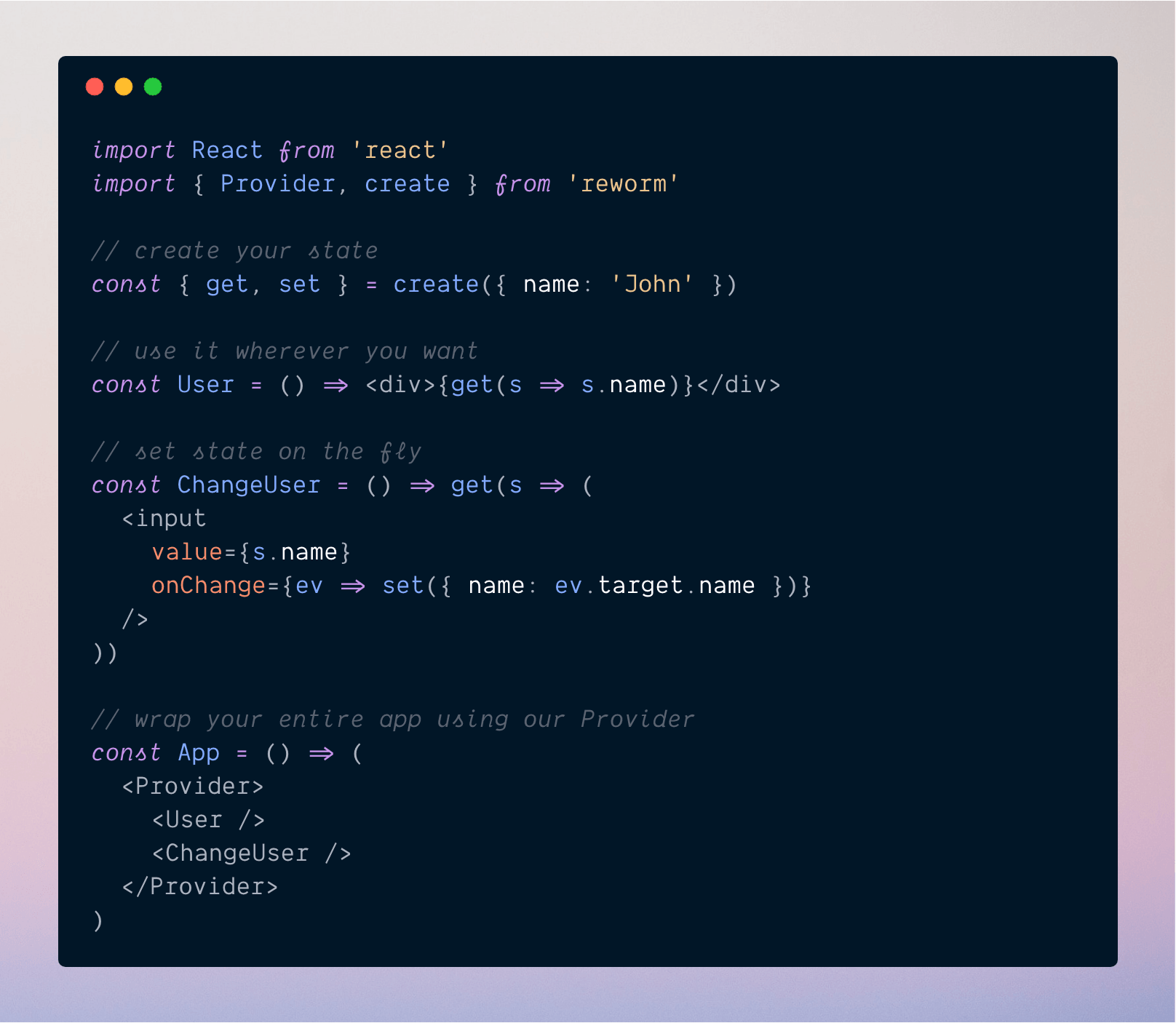

🧐 Why?
Forget about actions, connections, reducers and a lot of boilerplate to create and manage states. With reworm you can create and manage state as simple as on the image above.
Todo List Example
💻 Install and Usage
Install reworm using your package manager
$ yarn add rewormThen just wrap your app with our Provider, create your new state and use it!
import React from 'react'import Provider create from 'reworm' const get = const App = <Provider> <div></div> </Provider>Change your state easily
Instead of defining actions or something else to change your state, with reworm you just need to use the set method like that:
const set get = Component { } { return <Provider> <div></div> </Provider> }Using selectors
Selectors are good because they prevent you from duplicating code. With it you can just create some functions and use them throughout your application.
import React from 'react'import Provider create from 'reworm' const select = const johnSelector = const App = <Provider> <div></div> </Provider>Listening state changes
If you want to listen changes on your state you can use subscribe():
import React from 'react'import Provider create from 'reworm' const user = state = name: 'John' { user user } { return <div>Hello thisstatename</div> }🔎 API
create<T>(initial?: T): State
Create a new state
get((state: T) => React.ReactNode)
Use this method to access your state
set((state: T | (prevState: T) => T) => T)
Use this method to set your state
select<S = any>(selector: (state: T) => S) => (fn: GetFn<T>) => React.ReactNode
Create selectors that can be used with your state and avoid repeating code.
subscribe: (fn: SubscribeFn<T>) => () => void
Use this method to listen state changes
📝 Typings
🕺 Contribute
If you want to contribute to this project, please see our Contributing Guide !
